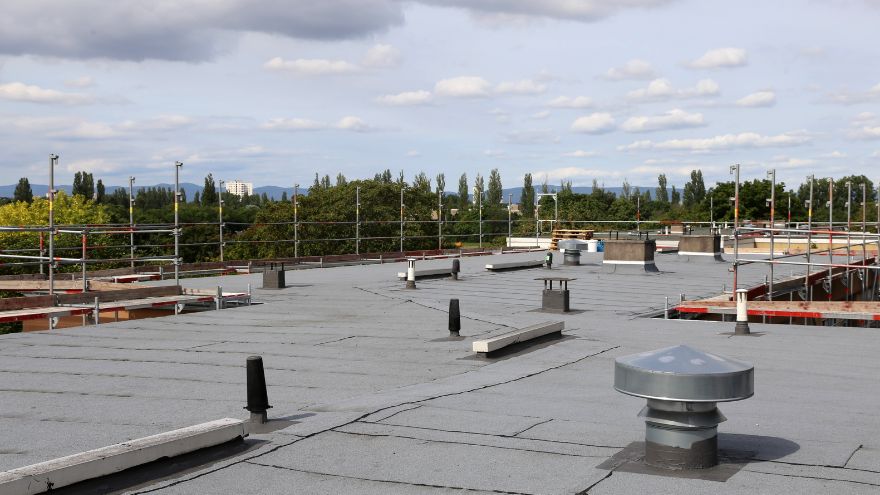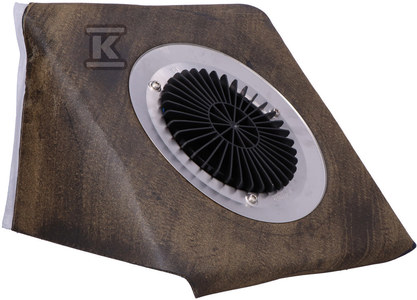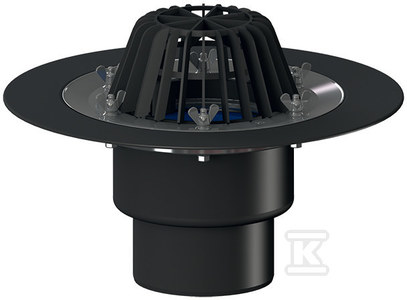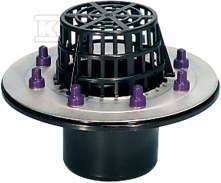The roof is undoubtedly one of the most important elements of the entire house. The roof drain plays an important role. It must be matched to the structure. This will provide a fully tight roof drainage system. How to choose the best roof drain?

Check out heat shrink sleeves at the Onninen wholesaler
What is a roof drain?
The roof drain should be solidly made and finished. The hermetic connection with the waterproof layer plays a key role. Thanks to this, the inlet is protected against contamination. Interestingly, it can be heated. Heating cables are used for this purpose, but they must be self-regulating. The most important role of a roof drain is to drain water. More and more investors are choosing flat roofs. Their price is lower, that's a fact, but on the other hand, there is a big problem with proper water drainage, which is the main task of such a roof drain.
 Thanks to the appropriate outlet pipe , the roof drain can be installed even in ceilings. Please also note that the inlets can be used on flat roofs with waterproofing made of APP or SBS weldable felt or EPDM membrane. This drain should be installed at the lowest point of the flat roof. The main structures must be attached to the substructure.
Thanks to the appropriate outlet pipe , the roof drain can be installed even in ceilings. Please also note that the inlets can be used on flat roofs with waterproofing made of APP or SBS weldable felt or EPDM membrane. This drain should be installed at the lowest point of the flat roof. The main structures must be attached to the substructure.
In addition, special attention should be paid to ensure that the entire drain superstructure is placed evenly over the entire roof surface. However, it cannot be installed while pouring the reinforced concrete roof slab. In such a case, wait until the concrete sets thoroughly, then drill a hole with the key diameter in the reinforced concrete slab and install it. The roof drain must be installed in such a way that maintenance and cleaning is possible. It is best to perform maintenance inspections at least twice a year.
Which roof drain should I choose?
At the very beginning, it is necessary to mention the regulations, namely in the case of medium-high buildings or higher buildings, i.e. above 12 m, slopes must be made to allow water to drain into internal drain pipes. The roof drain is important. So how do you find the best one? There are vertical inlets that drain water directly into rainwater drainage pipes. Horizontal drains are also available, which first drain the water into the sink basket and only then into the sewage system.
 When choosing, you also need to pay attention to the heating band, which may be built-in. Thanks to this, it prevents the roof drain from freezing and also allows it to remain patency at any time of the year. Models without a headband are also available. Don't forget how important an integral role is played by the integrated collar, which affects the tightness and continuity of the waterproofing coating. The basket is very well protected against clogging and contamination. Due to the fact that the drain is the lowest element of the roof, it must be resistant not only to mechanical damage, but also to pollution, low and high temperatures, and intense solar radiation. The roof drain should also be matched to the waterproofing layer of the roof. It is important that the roof outlet with a collar is made of a material compatible with the material of the waterproofing layer.
When choosing, you also need to pay attention to the heating band, which may be built-in. Thanks to this, it prevents the roof drain from freezing and also allows it to remain patency at any time of the year. Models without a headband are also available. Don't forget how important an integral role is played by the integrated collar, which affects the tightness and continuity of the waterproofing coating. The basket is very well protected against clogging and contamination. Due to the fact that the drain is the lowest element of the roof, it must be resistant not only to mechanical damage, but also to pollution, low and high temperatures, and intense solar radiation. The roof drain should also be matched to the waterproofing layer of the roof. It is important that the roof outlet with a collar is made of a material compatible with the material of the waterproofing layer.
For this reason, the HL DN110 roof drain deserves attention. It is very easy to keep it clean. It is made of plastic. It will work even in the case of very intense rainfall.
Another good choice is the HL 110mm roof drain with a bituminous collar . This roof drain can be adapted to various roof layer arrangements, including classic, inverted and green roofs.
You can also choose a KESSEL roof drain DN 100 . It is resistant to temperatures up to 400 degrees Celsius and corrosion. It also meets the highest acoustic standards. Also note the pressure sealing flange with stainless steel screws, which ensures even greater tightness.
How many emergency transfers should be used?
 Emergency drainage can be provided inside the building via a separate piping system. However, this solution is not practical and may cause many problems. For this reason, an outdoor drainage system will work better. In this case, rainfall must be discharged from the roof without being connected to the piping system. You need to choose the right drain. The number of emergency overflows depends on the roof area.
Emergency drainage can be provided inside the building via a separate piping system. However, this solution is not practical and may cause many problems. For this reason, an outdoor drainage system will work better. In this case, rainfall must be discharged from the roof without being connected to the piping system. You need to choose the right drain. The number of emergency overflows depends on the roof area.
You should follow the DIN 1986-100 standard, which states that one gully and one emergency drainage must be used for each roof depression. You can also use a sufficient number of inlets to ensure efficient water flow for emergency drainage. In the case of flat roofs, at least two outlets or one outlet and one emergency overflow should be provided for each roof surface. In this way, even water from storm rain will be effectively drained away. If flat roofs with cornices or gutters without eaves are used, they should be provided with overflow and emergency outlets.